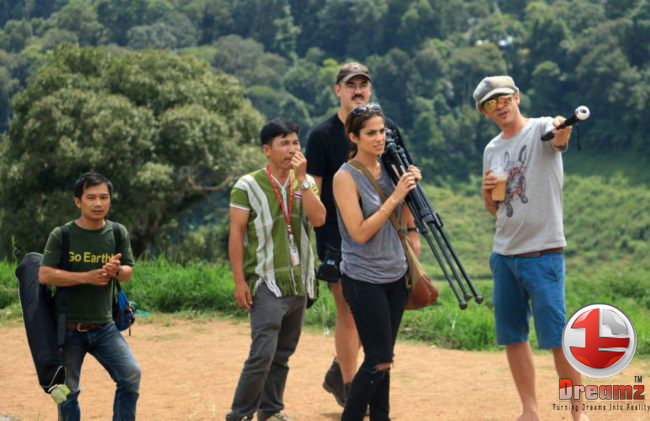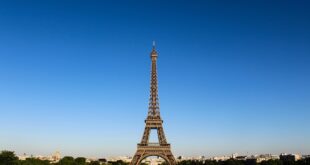
There’s a particular quite traveler that loves art and wonder . She seeks it out and spends hours trolling through museums, wandering around cathedrals and searching , seeing such a lot that she may develop a sore neck, or worse, Stendhal’s Syndrome. Stendhal, a 19th century French novelist, was so overcome with the sweetness of Florence that he developed symptoms of disorientation – dizziness, sweating, and overwhelm. Over the years, others have reported similar symptoms when faced with such a lot beauty. The lover of art and wonder is forced to require refuge in café breaks and deep naps at the hotel. Art, however, can provide the answer for an excessive amount of beauty. Not viewing it, but doing it.
Simple art exercises provide how for a traveler to soak up the splendors of travel during a deep, meaningful, and lasting way. Quick sketches done as a drawing or a quick writing of details offer a chance to hamper and really take in a setting. Artist Frederick Franck, in his book The Zen of Seeing, encourages drawing as how to show overwhelm into depth an intimate way. “Atmospheres build themselves up out of 1,000,000 imperceptible micro details, elements often too minute, too fleeting for the conscious mind to select up. The eye-heart-hand reflexes notes down, in order that the buildings, and even the faces that form themselves on the paper become unmistakably Roman, Indian, Parisian, or Japanese.”
By pausing to capture impressions, a traveler becomes quite a sponge, absorbing paintings, sculptures, and dramatic buildings. once you pause to make something within the moment, you’re ready to connect from the deep well of yourself to the thing you’re drawing. A Provencal place, an array of vegetables from the local market, and a crumbling pile of Roman ruins wake up under the gaze of an artist. the planet becomes more vivid once you look to ascertain what you’ll draw or capture during a paragraph. Everything are often interesting, once you are willing to really see it.
Franck’s books on the topic of seeing more through drawing are delightful. His drawings are expressive and well wrought. The sketches leap off the page and convey the viewer into the scene. it’s going to be intimidating to the novice artist to ascertain such craft. People often claim that they ‘can’t draw a straight line’, meaning that their artistic talents are nil. an equivalent is true for writing. Postcards home often don’t stray from the formulaic recitation of events. Franck insists that ‘seeing’ instead of ‘looking at’ is that the key not only to raised art, but richer life experience. Capturing the essence of an area or a flash doesn’t require great artistic talent or extensive polishing. Simply slowing down, listening , and releasing expectations of ‘good’ drawing or writing is that the recipe for expressing something that months later will recall a special experience from a visit .
Natalie Goldberg, author of Writing Down the Bones, applies similar concepts to writing. Her technique, ‘free writing’, invites the author to settle on an object or a topic and write no end . No editing, pausing, crossing out or judgment is allowed within the process. When using this as a travel tool, you’re ready to engage with the small print of an area . Your verbal snapshot of the bartender at the local café, or of the taxi driver who zoomed you thru the streets of Paris become vivid reminders of a flash . instead of write on each day during which you took during a thousand new impressions, you’ll zero in on one or two experiences and chronicle them during a deeper way. Like Franck, Goldberg insists that the work be allowed to unfold without judging it. the purpose isn’t to supply ‘art’ or ‘writing’ but to interact within the world through art and writing. the method , not the merchandise , is what’s valuable here.
What’s the results of all this paying attention? once we hamper , hook up with our creative core and really see, we are more present. The whirl of impressions doesn’t tug at our senses, clamoring for attention. A reflective peace settles us deep within the scene, allowing us to become a part of the landscape, instead of skimming over or passing through. it’s no coincidence that both Franck and Goldberg are Zen practitioners. And while we don’t got to become Zen masters to experience the planet deeply, adopting the tactic of slowing down and seeing can enrich our travels and our lives reception .
Using art as a way to interact with an area empowers you, not even as a witness, but as someone who is involved within the creative act. Journey of the Senses, an American tour operator, leads tours that focus not on a stream of sights, but on engaging profoundly with a couple of experiences. The trip to Provence includes a visit to a chevre farm, an vegetable oil tasting and a gathering . In California, participants are invited to attach with the landscape. Redwood forests, beach coves and grassy hills become the guides for slowing down and seeing. Alongside the visits are lessons in gesture drawing and free writing. Using these creative tools, participants meet up with to the experience and bring home not only a guidebook of their own design, but a memory that holds them more deeply. Drawings and free writes provide a more personal chronicle than photos. Looking over a notebook from the trip that has your art and words may be a visceral reminder of place and atmosphere.
Cooking instruction is another branch of art which will deepen a traveler’s experience. Dozens of cooking abroad programs can attest to the facility of food as how to explore a neighborhood . The palette of a neighborhood may be a reflection of its unique history, art and heritage. The French call this ‘gout de terroir’ or taste of the world . A participant in Arles bemoaned the very fact that her bakery in California couldn’t make baguette with an equivalent crunchy texture. The gout de terroir, which incorporates the tactic of growing, cultivating and cooking foods, provides a singular and regional flavor. Through market tours and a gradual building of palette of flavors, techniques and native ingredients, travelers literally absorb the sense of a neighborhood .
A fun art exercise is to possess participants wander a city’s streets, choosing one detail to draw. during a Journey of the Senses tour in Arles, participants sketched the doors found on one street. This allowed them to realize a deeper understanding not only of the architecture of the town , but of themselves. “When i ended to draw the doors, I saw such a lot more. i assumed I had a perceptive eye, but it had been only I bogged down to draw did I realize that I could see more detail, and obtain closer to what was around me,” said Sherell, a 2005 participant.
In a world that constantly involves more, more, more, using art as a travel tool is a call for participation for deeper, deeper, deeper. We visit escape our normal routine. We refresh our spirits within the face of great beauty and achievement. By bringing ourselves into the creative dance, we give ourselves a richness that surpasses the photos we take and therefore the treasures we buy and convey home. A renewed sense of confidence, a more sharply honed eye and an appreciation for the straightforward things are treasures that we will use again and again in our own town and on other trips.
 Dreamz Turning Dreams Into Reality
Dreamz Turning Dreams Into Reality



